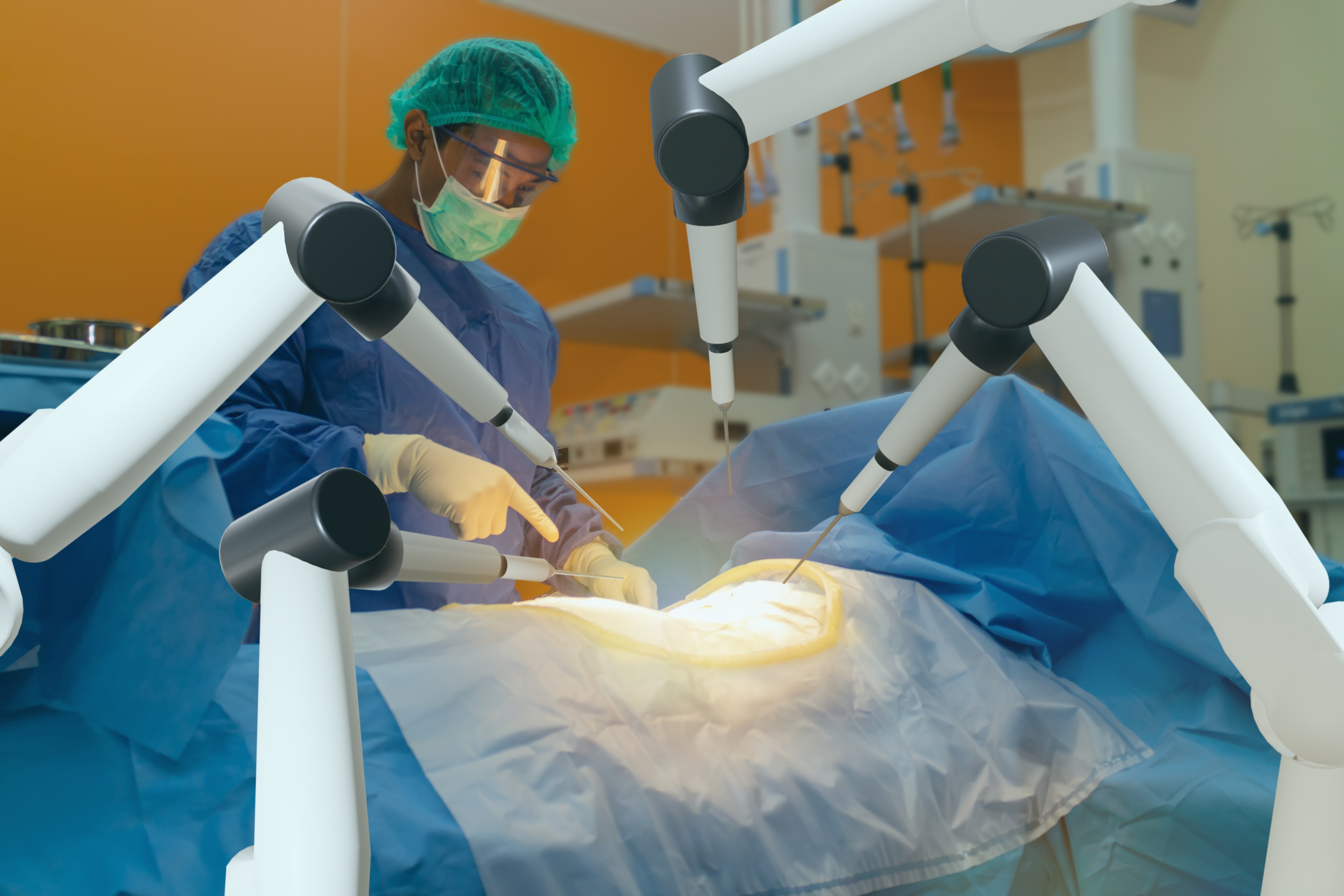Behind only three other people on this planet -- Bill Gates, Carlos Slim, and Amancio Ortega -- stands Warren Buffett with $58.2 billion in accumulated wealth, according to Forbes' latest rankings of the world's richest people.
Buffett, perhaps known best by his moniker, the Oracle of Omaha, is easily the most prolific and well-known investor in the world since he was able to, through his holding company Berkshire Hathaway, amass an incredibly successful streak of market outperformance over the past five decades.

Warren Buffett speaking with President Obama, Source: White House on Flickr.
Buffett's approach to investing is simple: he prefers buying into businesses that he can easily understand, that have an established record of outperforming, and that often have incredible brand value. And he's been so successful at it, even the president of the United States will listen to what he has to say.
One area that Buffett has often avoided, however, is the health-care sector -- not because of its lack of growth, but primarily because it would take too much time and effort of Buffett's part to keep up with the trials and studies that usually accompany health care stocks. As of Buffett's most recent 13F filing, we discovered that just a tad more than 2% of his portfolio is dedicated to the health care sector. Of that the majority is locked up in dialysis center company DaVita Healthcare, with significantly smaller investments in Johnson & Johnson and Sanofi.
Clearly the way Buffett invests works for him -- five decades of outperformance demonstrates that. But Buffett's focus on slower-growth and larger businesses while effectively avoiding the health-care sector gives you the opportunity to be a significantly better investor than Oracle of Omaha.
Here are three ways you can emulate many of Buffett's ideals, but have the potential to run circles around the world's top investor by investing in the health-care sector.
1. Invest in companies that give you multiple chances at a home run.
Buffett primarily avoids biopharmaceutical stocks because he doesn't have the time to follow clinical study results and can't easily understand the business model. Plus, Buffett's favorite holding period is essentially "forever," and branded pharmaceutical products only have a finite patent period.

Source: Novartis.
But, what the common investor needs to understand is you don't have to a biomedical engineer or a chemist to understand the ins and outs of the health-care sector as long as you find companies that give you as many chances to hit a home run as possible.
Take Isis Pharmaceuticals (ISIS 1.15%) as a good example. Isis' antisense technology platform has allowed the company to develop in-house therapies across a number of indications -- cardiovascular, rare disease, cancer, metabolic and inflammation -- as well as partner many of its experimental therapies up with larger pharmaceutical companies. The end result is that Isis currently has one drug approved by the Food and Drug Administration (Kynamro, for homozygous familial hypercholesterolemia), as well as 33 ongoing clinical and preclinical studies.
Each of these trials represents a pitch with which Isis has the opportunity to hit a home run. The more pitches you get, the more opportunities you have to hit a home run. Furthermore, Isis currently has one dozen partners helping to develop some of these experimental therapies, which means reducing the burden of drug development expenses in some instances, as well as possibly providing upfront cash to begin new research studies.
Keep in mind, though, that you can find these home-run possibilities outside of the biopharma sector. OraSure Technologies (OSUR +3.71%), for instance, is a medical diagnostics and assay test developer that has more than a dozen products on the market ranging from infectious disease tests to substance abuse diagnostic tests. In addition to these marketed items, it also has a number of ongoing fluid assay diagnostic tests in the works with collaborative partner Roche.
OraSure is particularly intriguing because it's the only company to develop of point-of-care hepatitis-C test, as well as an over-the-counter HIV test. The Centers for Disease Control and Prevention estimates that 3.2 million people in the U.S. have hepatitis-C, but also that a vast majority have no clue they had the disease. This makes diagnostic testing especially crucial for higher-risk people, such as those born between 1945 and 1965, those who had blood transfusions prior to 1992, and illicit injectable drug users. If Medicare and Medicaid begin covering this high-risk group per a recent Centers for Medicare and Medicaid proposal, OraSure could have plenty of chances to hit a home run.
2. Seek out established businesses.
Another way you can out-Buffett the Oracle of Omaha in the health-care sector is to seek out established businesses.
Understandably, this might sound word-for-word just like what Buffett already does with his portfolio and why he's currently sitting on slow-growth prospects like Johnson & Johnson and Sanofi. What I'm here to tell you is that some of the best established businesses can be found well below the $10 billion market value threshold, and they can yield some of the best growth rates in the industry.
With Obamacare completely transforming the way we sign up for and receive health insurance, a company that you might consider is eHealth (EHTH +1.33%), a provider of private-platform insurance for individuals, families, and small businesses.
Enrolling on Obamacare's marketplaces was very difficult at first because the federally run health exchange, Healthcare.gov, wasn't working as advertised through the first two months. eHealth, however, has been around for years, long before Obamacare was even signed into law, and runs an extremely similar insurance comparison platform that allows consumers to make an educated purchasing decision. Best of all, eHealth's platform offers an out for those who want to avoid the government-run marketplace altogether. It should probably come as no surprise then that eHealth's five-year growth rate is projected to be 17.5%, or that its total estimated membership increased by 27% in the fourth-quarter from the previous year.
Likewise, robotic surgical device maker Intuitive Surgical (ISRG 1.29%) comes to mind. Despite many companies attempting to infiltrate the soft tissue surgical field, Intuitive Surgical's da Vinci robotic surgical system has absolutely dominated since it was approved for laparoscopic surgery in 2000.

Source: Intuitive Surgical.
Because so little competition exists, Intuitive Surgical is able to command high prices for its surgical system, and it's able to clean up on the back end by providing maintenance for the machines and education for physicians.Intuitive Surgical has shown that having a dominant market position can be quite lucrative for its shareholders and its longer-term outlook.
3. Spread around your investments via an ETF
Last, but certainly not least, you have the opportunity to trounce Buffett's returns by looking into exchange-traded funds, or ETFs, in the health-care sector.
The advantage of ETFs is that is it spreads your risk across a number of companies for a relatively low management fee. In return, you won't have trouble sleeping when the Dow Jones gains or loses 300 points in a single session.
One I would suggest that has Buffett-topping potential is the PowerShares Dynamic Biotech & Genome ETF (PBE 0.15%). This ETF is comprised of 30 predominantly drug developing and genome sequencing/diagnostics companies of various sizes, ranging from large-caps like Gilead Sciences with its $122 billion market cap all the way down to biopharma royalty rights owner PDL BioPharma with its $1.16 billion market cap.
This ETF appears to offer investors a little bit of everything. You have an established product portfolio with Gilead, a dominant rare disease portfolio that's free from competition with Alexion Pharmaceuticals, deep development pipelines with Isis Pharmaceuticals and Nektar Therapeutics, and you can take advantage of a growing trend in personalizing treatment options through genome sequencing and diagnostic companies. It's certainly an ETF that has buy-and-hold potential.










